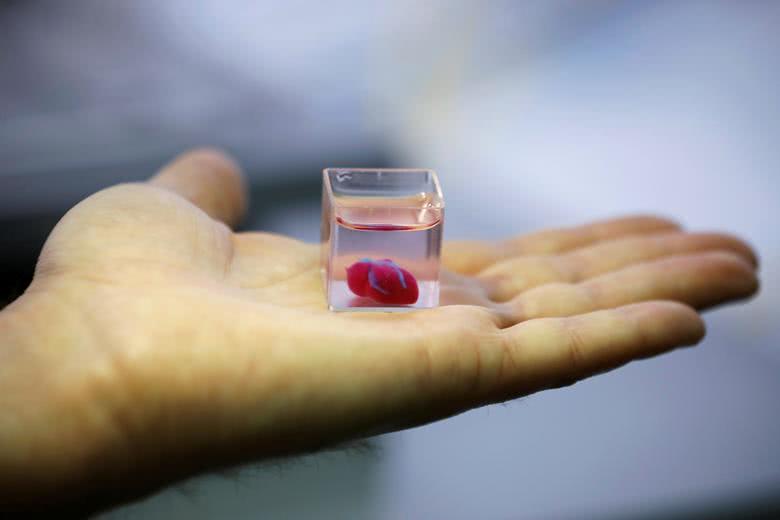First-ever 3D printed heart
In a major step towards 3D printed organs, Researchers from the Tel Aviv University of Israel managed to successfully print the first-ever 3D heart. For this medical breakthrough researchers used the patient’s own cells and biological materials. The 3D-printed vascularized heart is about the size of a rabbit’s heart. Scientists prospect to make a heart of the size of a human’s heart using the same bioprinting 3D technology.
3D bioprinting, Photo Credit: REUTERS
Printing the first-ever 3D heart
Researchers took a biopsy of the patient’s own omentum tissue (a fatty tissue) in order to develop a ‘personalized hydrogel’ which was used as the “ink” necessary in the bioprinter. This, in turn, helped researchers to create complex tissue models including cardiac patches and eventually an entire heart.
Concept schematic from the research paper published in Advanced Science. Image Credit: Advanced Science/Wiley Online Library
Earlier researches on 3D Printed Heart
Until now, scientists were only able to print the simple tissues of the heart like cartilage and aortal valve tissue without blood vessels using regenerative medicine which is an emerging field positioned at the crossroads of biology and technology.
This is for the first time that anyone anywhere has successfully printed an entire heart well-supplied with cells, blood vessels and four chambers.
How this 3D-printed heart is helpful?
Heart-related diseases have been proved fatal as in many nations people have succumbed to heart diseases making it a leading cause of death. In this scenario heart transplantation is the only solution to cater to the problem. But the problem with heart transplantation is the lack of heart donors. Even if a donated heart is available, the rejection of the new organ by the patient jeopardizes the success of transplantation.
Hence, considering the issues mentioned above we needed an alternate solution to the problem and scientists have devised not just an alternative but an ultimate solution to the problem by engineering the first-ever 3D-printed heart.
The research demonstrates the potential of the approach for engineering personalized organ replacement in the future given to the biocompatibility of engineered materials.
Challenges
First, the heart printed by the researchers is only the size of a rabbit’s heart. We still need to wait for the heart of the sie of a human’s heart.
Second, the cells using which the 3D heart is made of can only contract, but don’t yet have the ability to pump. As a next step, researchers are planning to train the first 3D printed heart to behave like a real one.
So, a full-fledged human-alike heart still seems a tantalizing promise.
The research was published on April 15 in a peer-reviewed scientific journal – Advanced Science.
You may also like to read –
- Unique “Oil-eating bacteria”
- “Chain-melted state” – A new state of matter discovered
- First Ever REAL Black Hole Image
- Stephen Hawking’s theory of Dark Matter ruled out
- World’s first country to launch 5G mobile services
Enhance your GK – All you need to know about “International Solar Alliance (ISA)”
